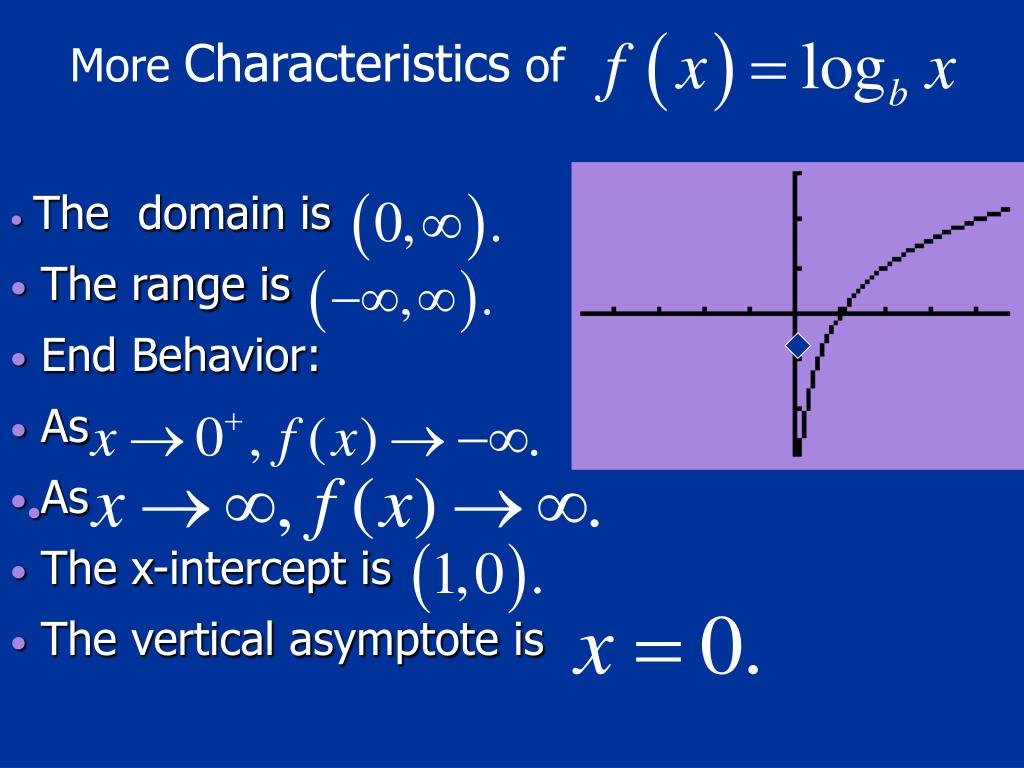

The logarithmic function whose graph may be written asįind the logarithmic function of the form \( y = a \log_2(x - c) + d \) whose graph is shown below with a vertical asymptote (red) given by \( x = 0 \). Solve the above equations simultaneously to obtain We use the above to rewrite equations (1) and (2) as

Henceįrom the graph, we note that for \( x = 5 \) \(y = 0 \) and for \( x = 9 \) \(y = 2 \).

The vertical asymptote is given by \( x = 1 \). The vertical asymptote is given by the solution to the equation The logarithmic function whose graph is shown above is given byįind the logarithmic function of the form \( y = a \log_2(x -c)+d \) whose graph is shown below with a vertical asymptote (red) given by \( x = 1 \). Since \( \log_4(4) = 1 \), the above equation may be written as Substitute \( c \) by \( -2 \) in equation (2) to obtain \( \log_4(-1-c) = 0 \ \ \) (equation 1')Īnd the above equation may be written in exponential form as follows \( a \log_4(2-c)= 3 \ \ \) (equation 2)ĭivide both sides of equation (1) by \( a \) to obtain The logarithmic function whose graph is shown above may be written asįind the logarithmic function of the form \( y = a \log_4(x-c)\) whose graph is shown below. The solution to the above exponential equation is \( b \) is the base and must be positive. Rewrite the above logarithmic expression into an exponential form Substitute \( c \) by \( - 2 \) in equation (2) to obtain \( 2 = \log_b (2-c) \ \ \) (equation 2)Įquation (1) may be written in exponential form as Substitute \( x \) and \(y \) by their values in the logarithmic function \( y = \log_b (x-c) \) to obtain two equations The function whose graph is shown above may be written asįind the logarithmic function of the form \( y = \log_b (x-c) \) whose graph is shown below.įrom the graph, we note that for \( x = -1 \), \(y = 0 \) and for \( x = 2 \), \(y = 2 \). Rewrite the logarithmic expression above into an exponential expression to obtain Substitute \( x \) and \(y \) by their values in the equation \( y = \log_b (x) \) to obtain The point \( (3,1) \) is on the graph of the function. We also review the relationship between the exponential and logarithmic functions which is used to convert logarithms and exponentials expressions.įind the logarithmic function of the form \( y = \log_b (x) \) whose graph is shown below. The vertical asymptote is found by solving the equation Hence, the domain of function \( f \) defined \(f(x) = a \log_b (x - c ) + d\) is found by solving the inequality Some of the most important properties of the logarithmic function are the domain, range and vertical asymptote if any. The properties of the graphs of logarithmic functions. Logarithmic Functions of the General Formįind a possible equation of a logarithmic function ,Ī preparation for the examples below would be to work through the tutorial on graphs of logarithmic functions to explore and study Find Logarithmic Function Given its Graph


 0 kommentar(er)
0 kommentar(er)
